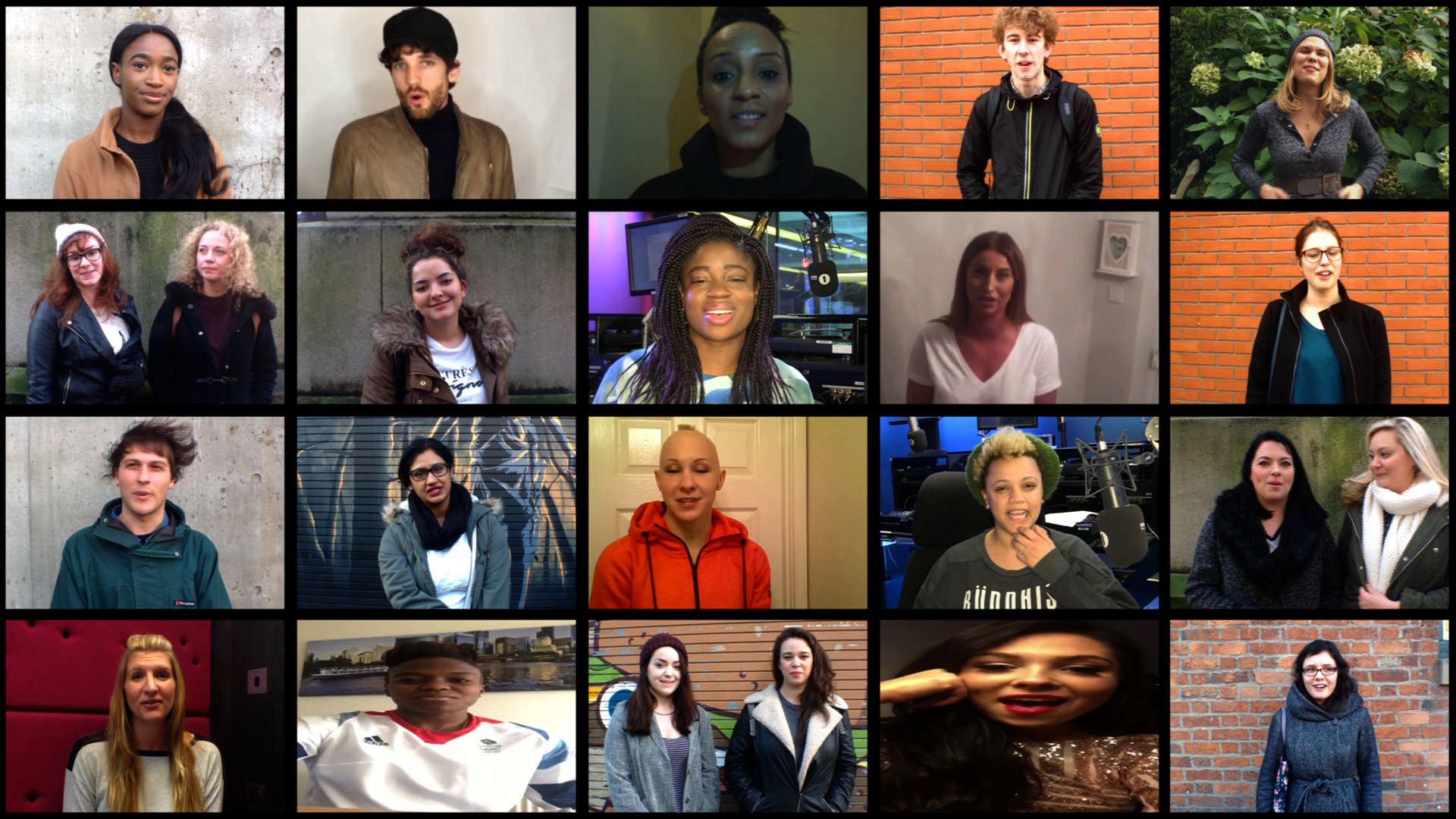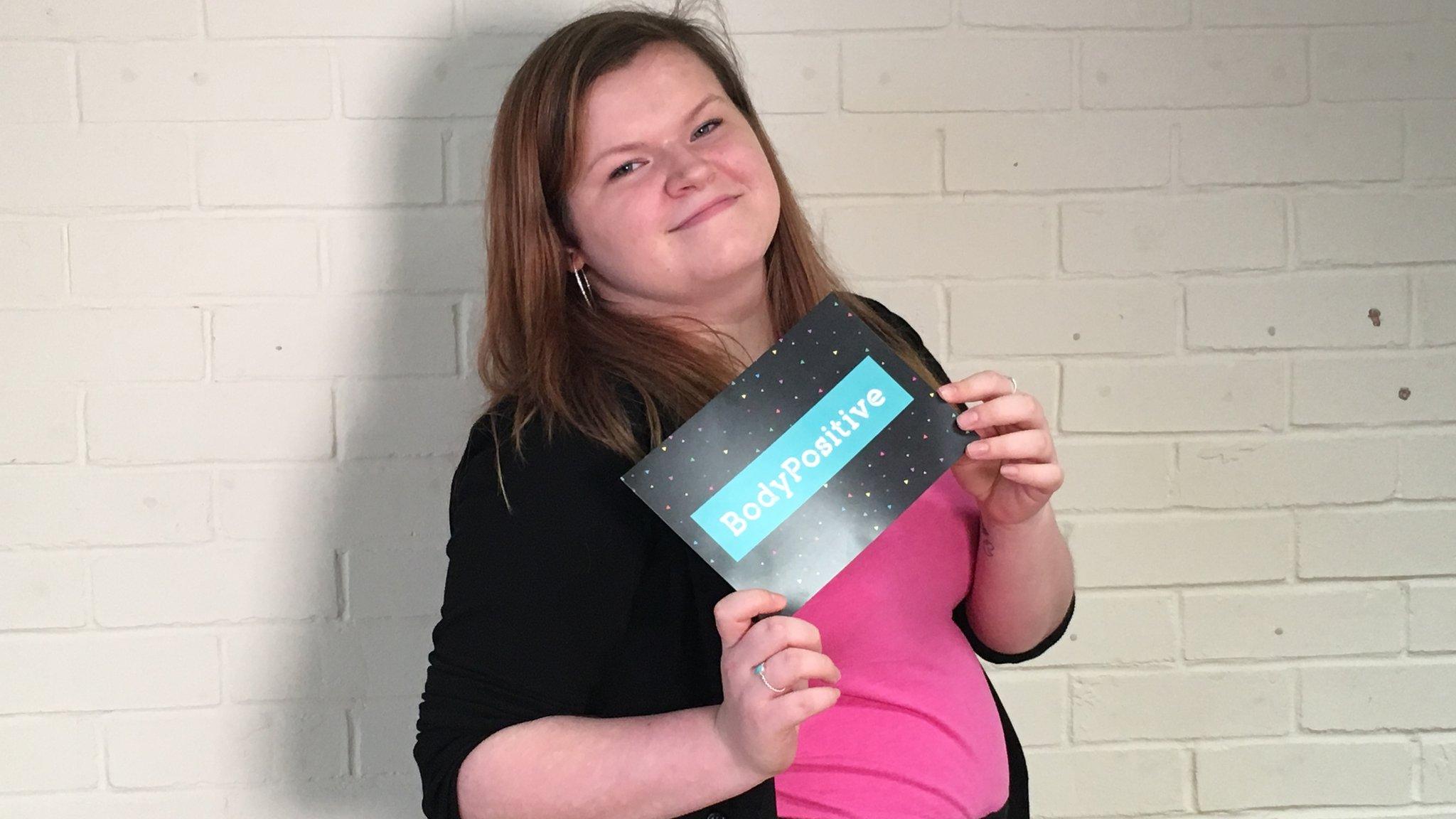#ThisIsMe: My struggle with anorexia
- Published

Warning: This article contains information which may be triggering for those with eating disorders.
For just over a year when I was 14 years old, I suffered from anorexia nervosa. Weighing a tiny amount, I bought children's clothing and consumed fewer than 500 calories a day.
Anorexia nervosa is far from just a battle of wills to resist eating a chocolate bar. It's a serious mental illness. A possession. As though developing a split personality -yourself and the anorexia. In fact, that's exactly what happened to me.
Prior to the illness, I'd been a happy girl and enjoyed a great relationship with my parents, but that deteriorated when anorexia embedded itself in my head. I developed techniques and deceptive ways to make it look like I'd eaten when I hadn't.
I'd dispose of food in literally any way I could. I became sneaky and desperate, and I'd lie constantly, dreading any time away from school because home-time meant food time.
'I've eaten' techniques included sprinkling toaster crumbs on a plate to make it look like I'd had toast. I'd hide any food down sleeves, in pockets, in bras, in my cheeks, anything to avoid swallowing it. I'd mop up milk from my cereal with tissues.
For a girl who loathed maths more than she currently hated life, I became highly adept at calorie calculation. And I knew how much EVERYTHING provided me with.
My mum was immediately on my tail when I started to get thin. I'd exercise compulsively — literally anything to burn calories. I'd relish any chance to get away from my parents so that I could burn calories exercising. I remember running laps of the playground during Girl Guide hours in the evening because it was the only time I could run and burn calories. My patrol must have thought I was very strange.
Now that I was below a healthy weight, my periods had stopped and I was attending weekly appointments at the Youth Hospital seeing a dietician and a psychologist. I was clinically depressed and spent every day being force-fed by my parents while I screamed and cried like a banshee at the threat of being fed two spoonfuls of ice cream.
The body dysmorphia was terrible. I could see my thighs were bigger in the mirror after eating anything calorific. That delusion to me was as real as the glass itself. I believe that I still suffer from this dysmorphia a little even now, over ten years later and at a much healthier weight.
My recovery was largely down to my mum, whose persistence in monitoring my every move eventually forced the voice in my head to say 'I can't win this', and slowly begin to shrink back. I remember that moment vividly as though the anorexia actually admitted defeat and resigned.
To this day, I can see a girl in the gym and know that she's struggling. I think it's in the arms. There's one at my gym right now. I see her working her tiny limbs like a demon on the spin bike, only she barely has any real muscle to power herself.
The fight to create a more versatile fashion and beauty industry is still one which is continuing relentlessly today. ALL healthy bodies are beautiful in any shape, any size and any form.
It's not about banishing sample sizes from the runways, TV and magazines, it's about creating body diversity. Young girls need to see models walk down the catwalk with healthy bodies resembling that of the average woman. They shouldn't have to be labelled as 'plus size', because they're not. They're just women.
Note: BodyPositive has removed some of the more sensitive aspects of this story. For help and advice please visit your doctor and/or one of the charities listed below.
- Published1 March 2016

- Published9 February 2016

- Published26 January 2016
